A very dangerous fallacy has taken the world of economics by storm over the last several years: the idea that there is very little inflation in the U.S. economy, therefore interest rates should remain at unusually low levels for an even longer period of time. As I will prove in this piece, the people who believe in the “low inflation” myth are being fooled by the fact that inflation in this unusual, central bank-driven economic cycle is concentrated in asset prices rather than in consumer prices…and the ultimate bursting of this unprecedented asset bubble is going to throw the U.S. and global economy into another depression.
Consumer price inflation has remained low while asset price inflation has exploded because asset prices have been acting like a relief valve for inflationary pressures that have been created by record low global interest rates and the pumping of trillions of dollars worth of liquidity into the global financial system. This doesn’t mean that we don’t have an inflation problem; we have a tremendous inflation problem on our hands, but you need to know where to look…
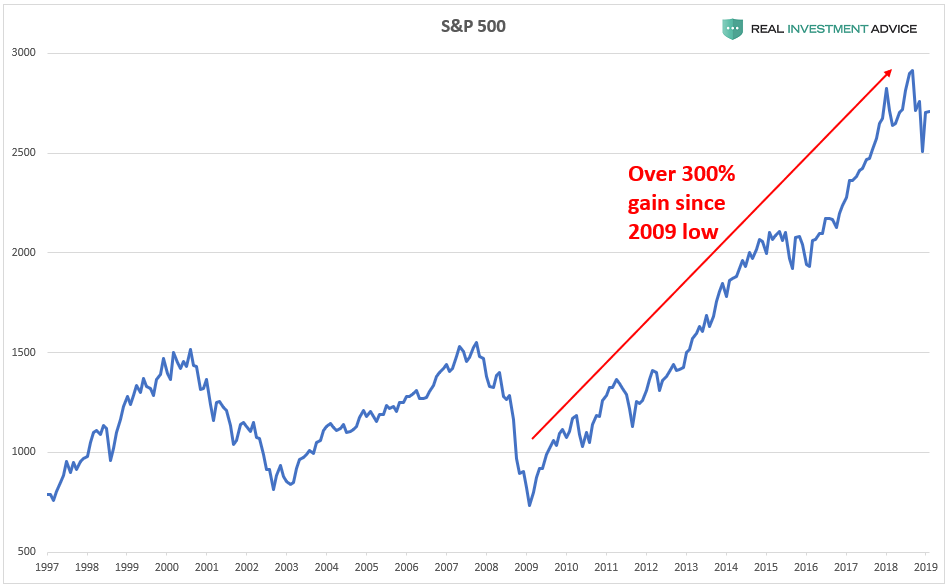
As a result of the Fed’s aggressive inflation of the stock market in the past decade, the S&P 500 rose much faster than earnings and is now at 1929-like valuations, which means that a painful correction is inevitable one way or another:
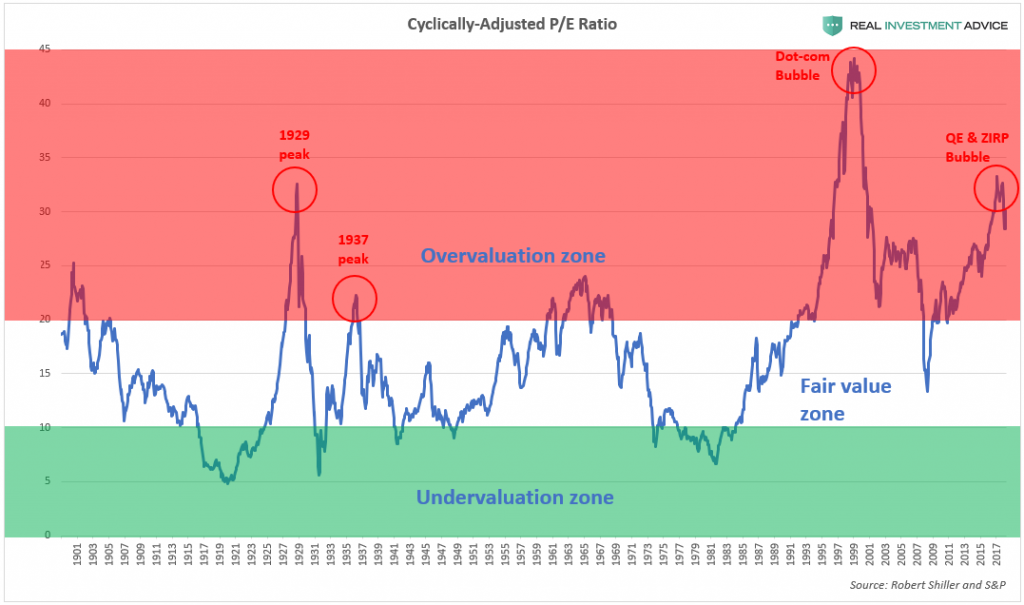
The Fed’s aggressive inflation of stocks and other assets has created a dangerous bubble in U.S. household wealth. U.S. household net worth has hit record levels relative to the GDP in recent years, which is a sign that household wealth is overly inflated and heading for an inevitable crash…
There is a direct link between how large our current household wealth bubble is and how interest rates have been at record low levels for a record length of time. Unfortunately, the coming household wealth crash will be proportional to the run-up…
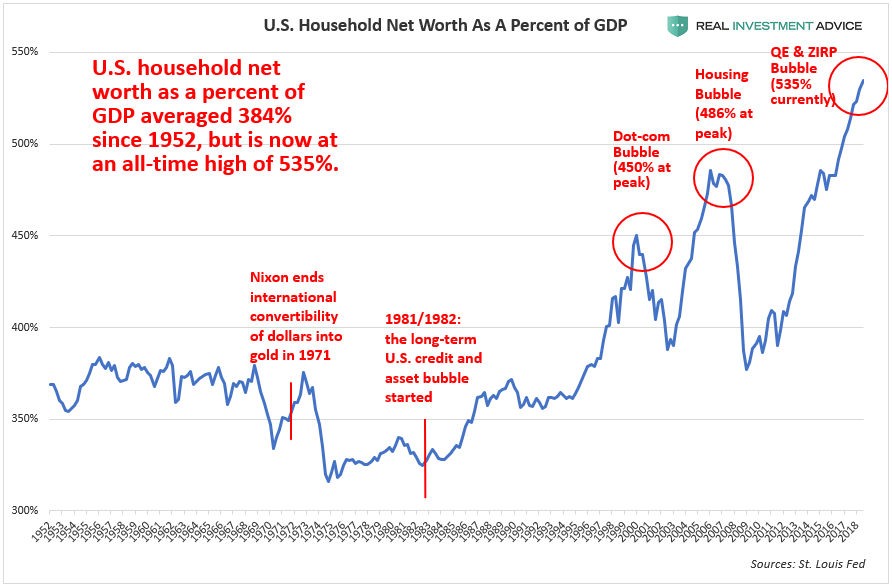
In addition to the fact that U.S. consumer price inflation has been low since the Great Recession because inflation has been concentrated in asset prices, there are many reasons to believe that consumer price inflation is actually running a lot hotter than mainstream economists think it is (or want you to think it is).
According to John Williams, the proprietor of Shadow Government Statistics, the U.S. CPI formula has been changed over the years for the purpose of understating inflation. For example, if we use the same CPI formula as we did in 1980 (blue line), it shows that inflation has been running at a nearly 10% annual rate for the past decade rather than the roughly 2% annual rate that today’s CPI (red line) indicates:
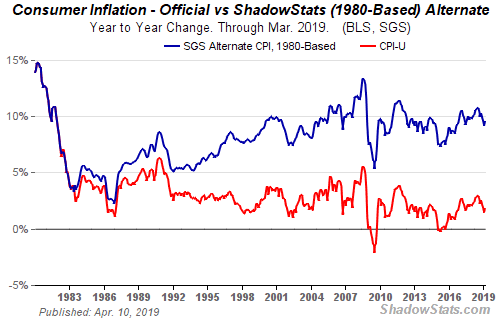
Similarly, the 1990 CPI formula (blue line) shows that inflation has been running at a roughly 5% annual rate rather than 2%:
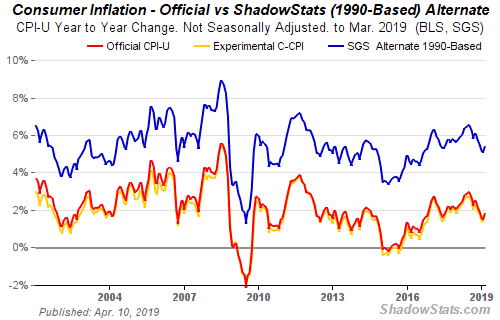
…Because so many high-tech consumer products have entered our lives over the past forty years and those products have improved at a rapid rate, they have masked the very real inflation that has occurred in big ticket necessities like housing, healthcare, childcare, and higher education. Sure, it’s great that laptops, cell phones, and big screen TVs have been falling in price while gaining more features, but that doesn’t help Americans who are going bankrupt due to exorbitant medical bills, being crushed under the weight of student loans, and can’t find affordable housing anywhere.
The chart below from the American Enterprise Institute shows the dichotomy between high-tech consumer products, which have been falling in price, and big ticket necessities that have surged in price and are becoming increasingly out of reach for many Americans:
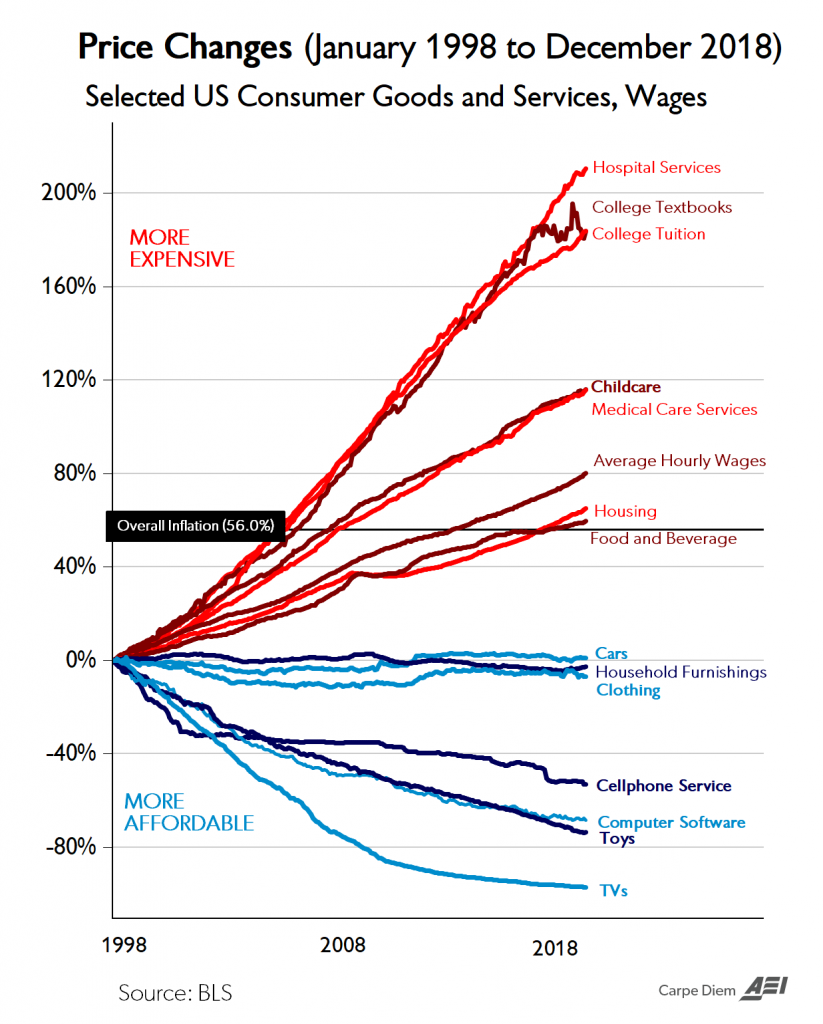
To summarize, America has a very real inflation problem, but it’s not where everyone is looking.
- The pervasive, but wrong belief that interest rates should remain at ultra-low levels will only serve to further inflate the asset bubbles that the mainstream economics world is ignoring or in denial of.
- Unfortunately, these bubbles are eventually going to burst and will cause an economic depression.
We should not expect a different outcome when the same characters who completely missed the housing bubble’s obvious warning signs are still employed at the Fed, the big banks, investment firms, academia, and financial media!
 munKNEE.com Your Key to Making Money
munKNEE.com Your Key to Making Money
I work in the retail food industry. I can confirm that inflation is real and continues to accelerate. One example is that a 10 count snack size candy bar sold for $1 in 2007. Today that package still retails for $1-$1.29, however there are only 6 bars in a package now. Per candy bar that equates to the price going from .10 each over .21 each, over a 100% in 12 years. This holds true for many grocery items. Retail prices have gone up a little, but package sizes have shrunk drastically. I call this hidden inflation. Many consumers don’t even see this.
The price of candy bar in 1964 was 10 cents and now a candy bar sells for around $1.10 for a candy bar and a silver dime cost today if you went to a coin dealer to purchase one sells for around $1.10. I have for decades measured infllation by the cost of a candy bar.
so according to your numbers if we assume 80% inflation over the past 20 years then it is high.
That is 3% per year compounded. doesn’t seem high to me.
For the first 4 months of 2019 every American U.S. Dollar has lost at least 10% of its value! First inflation is way up in just 4 months of this year. The Fed got an early message on housing, auto loans and credit card delinquencies. They flooded the system with cash. Long live QE. Yes your $1 McChicken just died. Most everything went up too, but your Fake News Media paid by Gov to give you opposite propaganda is to make you think the your dollar is not shrinkin. Check the prices folks. Readem and weep. Your standard of living just dropped by 10% in short order. Google the Chapwood Index. Read the Carl Denninger article…
GDP: STOP LYING! http://market-ticker.org/
an eye opener.
Well said Steve. You are the eye opener if no one else can see!